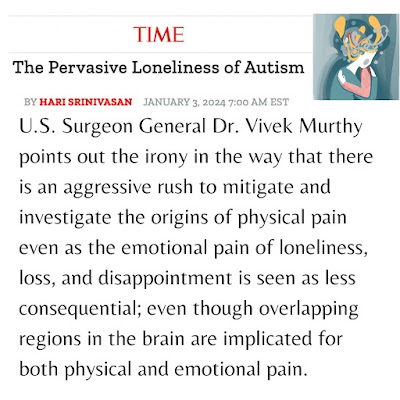In our interconnected world, the concept of "social capital" often comes up when discussing community well-being, networking, and social support. But what exactly is social capital, and what does it have to do with Autism?
Social capital refers to the networks, relationships, and norms that facilitate cooperation and support among people within a community. It's about the trust, mutual understanding, and shared values that make it easier for people to work together and help each other out. Think of it as the "glue" that binds communities together, allowing them to function effectively and support their members.
Social capital can be broken down into three main types:
Bonding Social Capital: This involves strong ties between close-knit groups, like family members or close friends. It's the deep trust and support that comes from tight connections.
Bridging Social Capital: This type refers to connections between more diverse groups. For example, acquaintances from different backgrounds or communities who come together for a common purpose, like a local sports team or a neighborhood association.
Linking Social Capital: This is about relationships with institutions or people in positions of power, like schools, employers, or government agencies.
Social Capital and Autism
For autistics, social capital can have profound implications. Navigating social networks and building relationships can be more challenging due to differences in communication styles, sensory sensitivities, and social expectations. These differences can sometimes lead to social isolation, which can impact an autistic person’s access to social capital.
Challenges in Building Social Capital
Research suggests that autistics often have less access to social capital, and autistic adults reported smaller social networks and fewer social supports. This limited social capital can affect various aspects of life, from employment opportunities to mental health and overall quality of life.
For many autistic people, traditional networking and social bonding activities can be stressful or inaccessible. Sensory overload in crowded environments, difficulties in interpreting social cues, or a lack of understanding from others can hinder the development of both bonding and bridging social capital.
The Importance of Inclusive Social Capital
However, social capital isn't just about quantity—it's also about quality and inclusivity. Building inclusive social capital means creating networks and communities where autistic individuals can thrive, contribute, and feel valued. It's about recognizing the unique strengths that autistic people bring to the table and ensuring that social networks are supportive and accommodating.
Inclusive practices, like sensory-friendly events, clear communication, and understanding different social needs, can help autistic individuals build meaningful relationships. Programs that promote autistic self-advocacy, mentorship, and peer support can also play a crucial role in enhancing social capital for autistic people.
For example, the Autistic Self Advocacy Network (ASAN) emphasizes the importance of self-advocacy and peer support to build strong, supportive communities for autistic individuals. These efforts help in creating a more inclusive form of social capital where autistic voices are heard and valued.
Building Bridges: Creating Supportive Networks
To improve social capital for autistic individuals, it's essential to focus on both bonding and bridging capital. Encouraging inclusive communities that celebrate neurodiversity and providing platforms for autistic people to connect with others can help build stronger, more diverse networks.
One way to foster bridging capital is through community programs that bring together autistic and non-autistic individuals in shared activities and interests. This could be anything from art classes to technology meetups, where people can bond over common hobbies and learn from each other's experiences.
Kasperski, R. and Blau, I., 2023. Can an online mentoring social network assist students with intellectual disabilities or autism in coping with special needs and accumulating social capital?. Education and Information Technologies, 28(5), pp.6027-6047.

















